|
|
|
|
|
Synology DiskStation DS415+ |
|
Join the community - in the OCAU Forums!
|
Introduction, Hardware, Horsepower, Software
It's a very first-world problem to have, but 15 years into this century and it seems we can all generate an awful lot of data very quickly. Almost everyone has a smart phone, takes photos and video of everything and anything and has a collection of important digital documents, project material etc that shouldn't be lost. Add in media files and miscellaneous data and it all starts to pile up.
Whatever data is important to you, the manufacturers have realised there's a market in letting you store and access that data across your home or small business network. The range of home NAS (Network-Attached Storage) units available is staggering now. For years, I've had an older PC running either Windows - or more recently, FreeNAS - for my home storage. However, on a visit to Agg's place in August 2014, I noticed he had an early Synology unit sitting on a shelf, still functional, still serving files happily after years of service. As it happened, Synology was releasing a small number of new models a month later, so I took delivery of a DiskStation DS415+.
The DS415+ is a four-drive model, meant for small business environments, or anywhere which requires a bit more grunt out of the unit than the usual home models. This extra grunt is provided by an Intel Atom quad-core CPU running at 2.4GHz. These "Avoton" units have been favourably described as a trimmed down "younger brother" of the server class Xeon chips, with very lower power usage. In the case of a NAS, the main uses for that extra computational power are on-the-fly 256bit encryption or live transcoding of media streams. There's 2GB of DDR3 built in as well.
However, the DS415+ has access to a mature and strong 3rd party application pool, so it can do quite a bit more than just being a small business server or media box. For more info and full specs, see the product page on Synology's website.
In my setup, I've got currently got the following drives installed:
Two 2TB Western Digital WD20EFRX "Red" NAS drives.
Two 2TB Seagate ST2000VN000 NAS drives.
Why two different brands? Well, I had the Western Digital drives already, bought six months previously, and when I went to get two more drives, the Seagates were slightly cheaper and there's no huge issue with mixing brands.
I know some people swear by WD and some by Seagate (I've always been a Seagate person myself, and have had horrible luck with WD until recent years), but after reading a few reviews and coming to the conclusion that differences in models would be negligible, I'd prefer to have drives from different batches and makers, just in case. Yeah, I know, it's a little trivial to follow that line of thought for a home NAS, but I've experienced bad batches of drives, way back when, so old lines of thinking die hard... and that's why there's two different brands of drives in the DS415+. :)
Redundancy and RAID sets
For redundancy, I chose to setup the four 2TB drives in a RAID-6 configuration, which gives me 4TB of usable space with the ability to lose two HDD's before losing data. I could have set it up in a RAID-10 (which is where data is 'striped' across two mirrored pairs of drives) and that does give a small performance increase. However, my primary concern is redundancy, and with RAID-10 while I can safely lose any of the four drives on the first failure, if I'm unlucky and lose a second drive shortly after, it cannot be the mirror drive of the first drive that failed. If so, I've lost my data. With RAID-6, however, I can safely lose up to two drives in any sequence.
There is a third option to RAID-6 and RAID-10 however, Synology's own SHR (Synology Hybrid RAID), which you can read more about here.
SHR works by dividing up any drives you put in the NAS into equal sized 'chunks' and it spreads the data across all these chunks. The upside of this is that you can pretty much put any mix of drive sizes into the DS415+ and it'll give you usable data with redundancy protection of losing up to one drive. There's also SHR-2 which gives two-drive-failure redundancy, but as it would provide no benefits to my situation and add a potential layer of complexity, I decided to stick with RAID-6.
Synology also provide a nice graphical RAID calculator on their site here.
Horsepower and connectivity
So as previously stated, the big drawcard of this NAS is its quad core processor, an Intel Atom C2538, running at 2.4GHz on a 22nm fabrication from the 'Rangeley' family of System-On-Chip CPUs built for low power usages. An always-on NAS unit is a perfect usage case for something that has a TDP of 15W, and although the DS415+ has two rather quiet 92mm fans, they're more for the hard drives than the CPU itself. There's more info on the CPU here on Intel's site.
This isn't a CPU that's going to set amazing benchmark records, but with quad cores running at 2.4GHz, it's more than capable of dealing with something like a Synology NAS, which doesn't require huge horsepower for a single process, but more it requires a processor that can handle a number of smaller processes all at once. In practice, the operations and DSM interface have always been snappy and responsive. The mechanical hard drives would be considered the performance bottleneck before you could ever accuse the CPU of not being "enough" for the job. If anything, the included 2GB of RAM would be somewhat of a bottleneck, but this can be upgraded if you're willing to void your warranty. With only one memory slot, however, you'll be replacing, not adding to, the existing DDR3 RAM module.
On the front, we've got the four drive bays hidden behind a plastic panel that pops off easily, a USB 2.0 port and the power button. It should be noted that the drives support hot-swapping, made easier with their snap-on caddies.
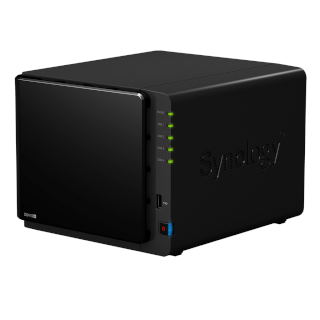
For external connectivity, on the back, we've got two 1gbit ethernet connections that support Link Aggregation, failover and multi-home networking, two USB 3.0 ports and eSATA port. The two ethernet ports are a great inclusion, but I'm not so sure about the eSATA port and how useful that'd be, but it's there nonetheless.
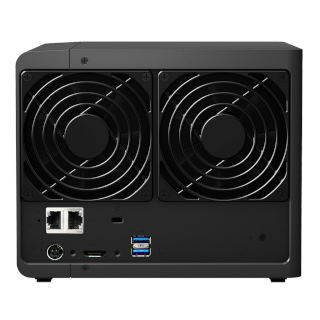
Software
Synologyís DSM (Disk Station Manager) software is very mature as of early 2015, with version 5.2 being the latest at time of writing. The update from 5.0 has added some valuable features such as Note Station Ė your own private Evernote, in addition to feature updates to file and media services. There are also mobile device apps that complement the media services.
One of the more important inclusions is the new Security Adviser. On the back of a number of hacks specifically targeting Internet-accessable NASís, security has become a focus for Synology and the advisor software highlights this well. In addition, DSM itself has multiple options to forward notifications to select users, sending details of warnings, alerts, important updates etc via email, SMS or other options.
Another notable update is the option to use a new virtualisation module called "Docker", but more on that later.
In the past, Iíve used FreeNAS and while I like the concept and execution of it as an open-source, freely available NAS OS, I found the user, security and volume management very frustrating and downright confusing in places. Itís very powerful of course, with ZFS and the ability to use almost any hardware you care to point at it, which is why FreeNAS is immensely popular, but it can be daunting to configure successfully. There's nothing wrong with FreeNAS; it's a fine piece of software with some very strong positives - ZFS support being probably the biggest - but to paraphrase an old computer nerd joke about UNIX: FreeNAS is user-friendly, it's just picky about it's friends.
Synology's DSM, however, is everybody's friend and it makes all its friends happy. It's the party host that may not have the latest music on the stereo, it may not have a Ferrari in the driveway, but it's always making sure everyone feels safe and comfortable, and making cocktails to order.
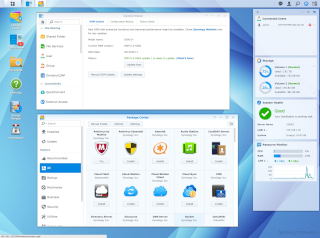
DSM's main interface.
It is very easy to use, with clear web-based interface, mimicking a standard windowed user interface. Itís very straight-forward and user friendly, particularly when it comes to user management and file permissions. Despite having a clear and concise interface, it doesn't feel that it's lacking in control of features, eg: it makes viewing physical drive SMART data very easy, wheras I've found that information sometimes buried away deep in other NAS systems. Not once have I felt that it was missing a vital feature or control mechanism.
Synology also has a strong community for third-party apps to run on a DiskStation, ranging from Apache webservers to Git development environments, Python for app support and media services such as Plex. Pretty much any service you can run on a regular Linux server, thereís generally an officially sanctioned app available to provide that.
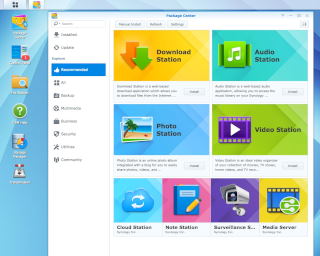 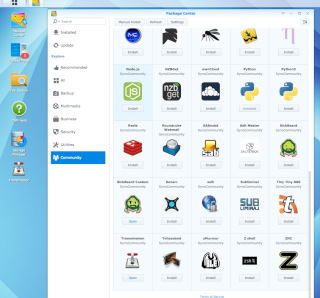
You can also install unofficial apps quite easily. When the DS415+ was released, there were problems with Plex compatibility due to hardware changes - however there was a simple workaround and even though DSM complained about it not being a legit package, one check-box later and I was allowed to do as I wish. That said, thatís the only time Iíve had to do it and I havenít come across the need to install anything else in such a way.
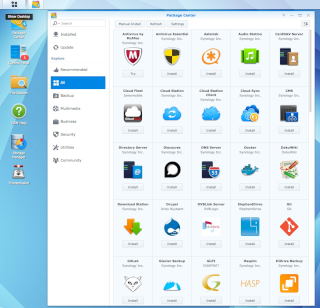
|
|
Advertisement:
All original content copyright James Rolfe.
All rights reserved. No reproduction allowed without written permission.
Interested in advertising on OCAU? Contact us for info.
|

|


